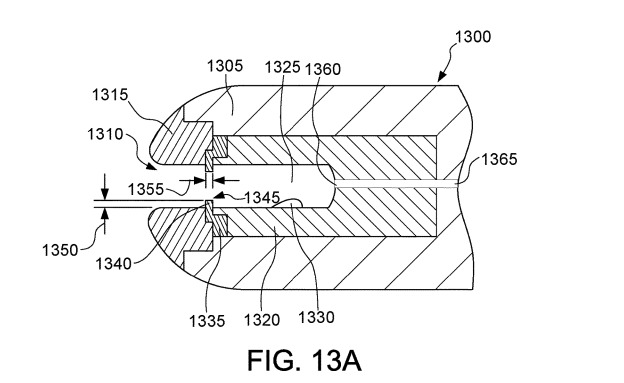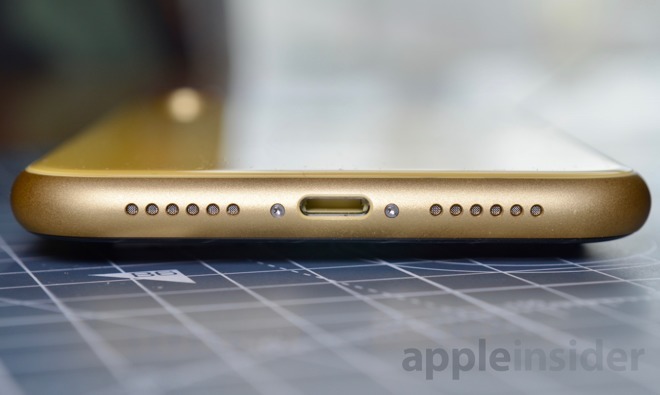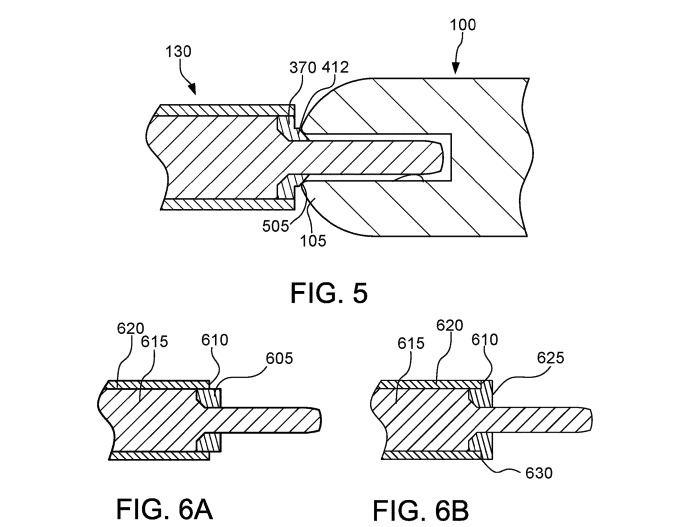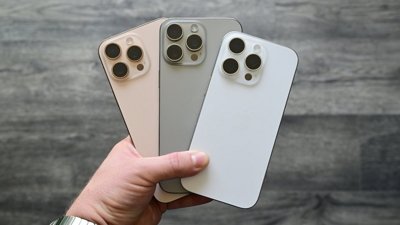Apple is continuing to find ways to make its devices more water resistant by protecting its ports from liquids, with the iPhone producer considering the possibility of adding elements to Lightning or similar connectors to create a "liquid-tight seal" when connected.
Apple has worked to make its flagship devices, the iPhone, as resistant to water as possible, increasing the protection over time to make the sudden immersion of the smartphone into water less harmful to the device. There is still room for improvement, including the possibility of adding extra elements to the relatively large gap created by the Lightning port to prevent any liquid ingress, which could potentially harm the internal components over time.
Granted on Tuesday and published by the U.S. Patent and Trademark Office, Apple's patent for "Sealed electronic connectors for electronic devices" attempts to solve just such a problem, by coming up with a variety of different ways a connector can be modified to protect against the elements once inserted into the port.
It is worth noting that this is not an entirely new area for Apple. In June, the company was granted an extremely similar patent for "Sealed accessories for electronic devices," and while the text is similar in terms of the discussed concepts, the accompanying diagrams from that patent are largely similar to the versions shown in the newly-granted version.
The most recent patent explains that a plug connector entering a port is not necessarily capable of holding back water, but the addition of elements on the plug or within the device itself could create a liquid-tight seal when the two are mated.
In one scenario, the sheathing around the connector extends away from the outer shell. When inserted into a port, this sheathe could be pressed down by the edges of the port's opening, creating the seal, while a retention mechanism holds the plug in place until it is released by the user.
This extra material cold be as little as 0.25 millimeters and as much as 2 millimeters away from the main body in this extension, and is produced from a silicone-like material. The deformable seal could also be produced using an elastomeric material, with a hardness between 5 and 80 Shore A, with a similar extension distance to the silicone version.
A key addition in this patent compared with the earlier version is the suggestion of an external covering to protect the port itself when there isn't a connector inserted.
 Diagram showing the use of a covering to protect the port when unused, and a line feed for a vacuum pump
Diagram showing the use of a covering to protect the port when unused, and a line feed for a vacuum pumpTo help ensure a tight seal, the patent suggests the use of a port that has a smaller aperture than the tab of the connector, one which expands as the connector is wedged into place. Such a deformable peripheral seal would help prevent the electrical contacts within the port from coming into contact with liquids, and would spring back into place when the port and connector are disconnected.
Similar to last time, the resulting seals can be improved upon by the use of a small vacuum pump extracting air from the cavity inside the port once the connector is inserted. By creating a vacuum, this can suck the connector into the port, applying more pressure to deformable seals and further reducing the possibility of ingress.
Users would theoretically trigger a release valve to break the vacuum if they wish to disconnect the two components.
The patent goes on to suggest that the pump could be motor controlled, though in order to save space and cost, it may not necessarily be a motor just used for creating a vacuum. It is suggested a motor could switch between being used for pumping and to power haptic feedback by vibrating, or even to drive a speaker.
Apple applies for numerous patents on a weekly basis, covering a wide variety of areas. While the existence of a patent or application isn't a guarantee that it will make an appearance in a future consumer device, it does at least indicate areas of interest for the iPhone producer.
Aside from the similar earlier patent, Apple has also looked into the possibility of using self-healing elastomers to protect connectors and ports since late 2015. Apple has also suggested the use of a port that uses a mesh "umbrella" to deflect liquids from an audio channel, effectively helping prevent water from interfering with speakers.
 Malcolm Owen
Malcolm Owen







-m.jpg)






 Mike Wuerthele
Mike Wuerthele
 William Gallagher
William Gallagher
 Charles Martin
Charles Martin


 Wesley Hilliard
Wesley Hilliard
 Stephen Silver
Stephen Silver










28 Comments
I expect that, at some point, we will see an iPhone without either ports or buttons. Just a slab of glass wrapped in a continuous, seamless band of 7000 series alloy "Aluuminium"
I like how this patent goes from the trivial (a gasket to secure the seal) to the mind-boggling (openings smaller than the plug and teeny tiny vacuum pumps).
I find it hard to believe Apple is really focusing on developing lighting anymore. It's already 6 years old, so presumably in its later half. They also shifter the new iPads to USB C, this will already kill like a fifth of the lighting user base. I sortof don't think it will be next year, but in 2020 or 2021 the iPhone will probably go USB C.